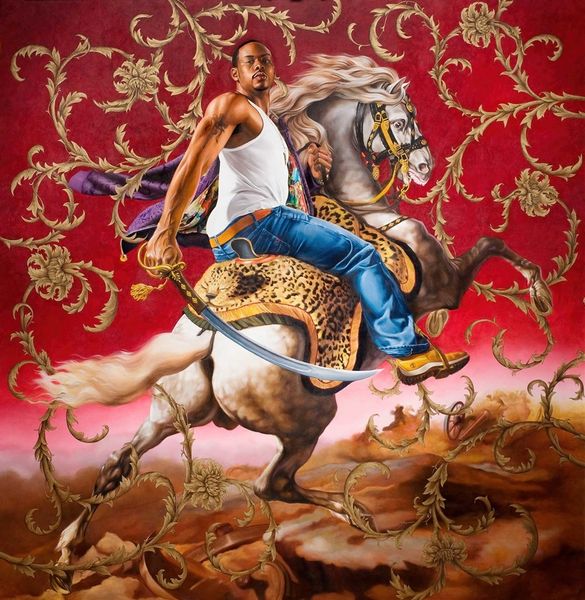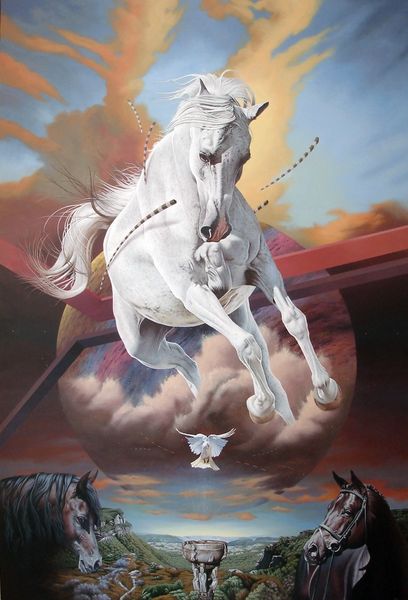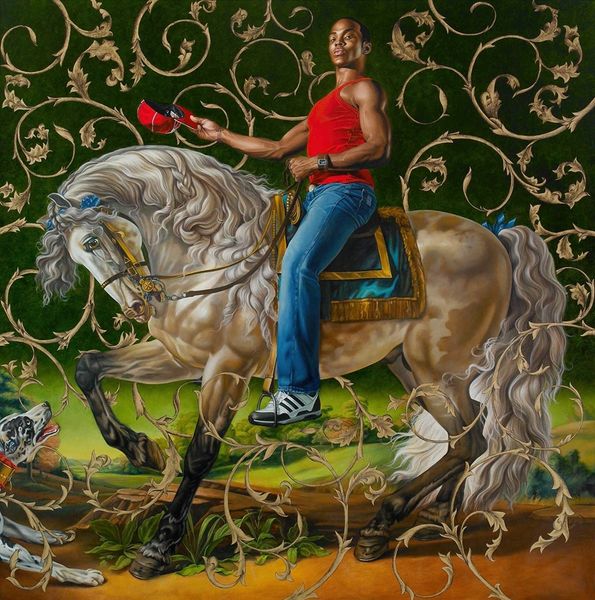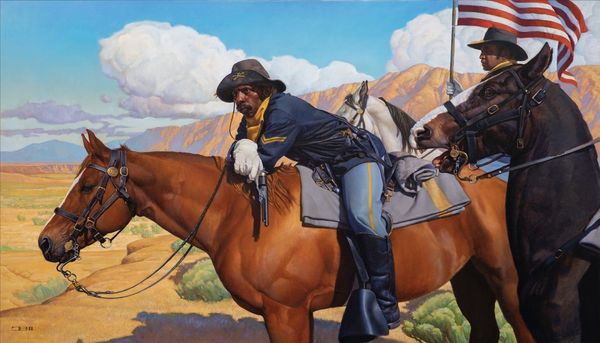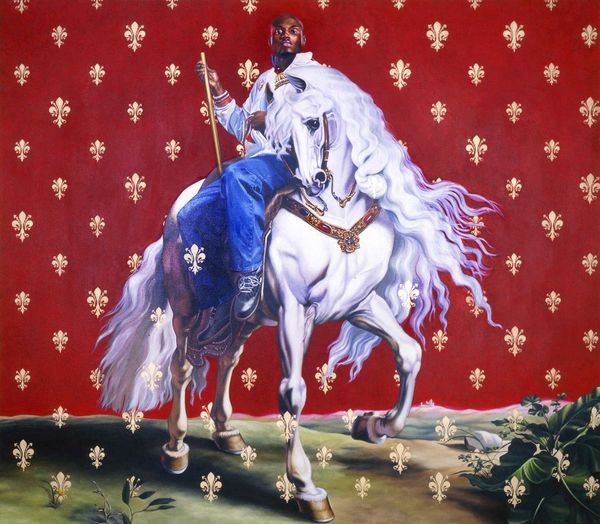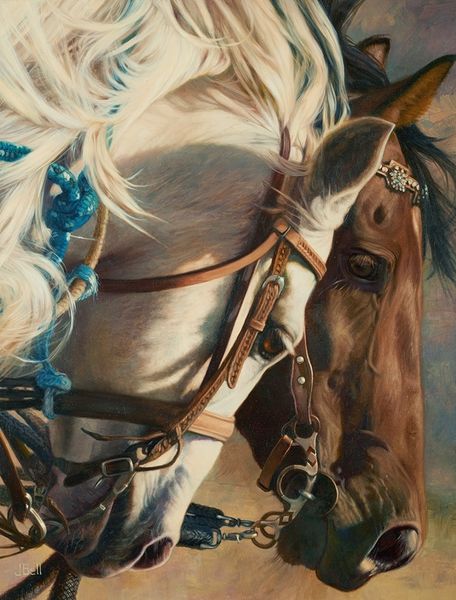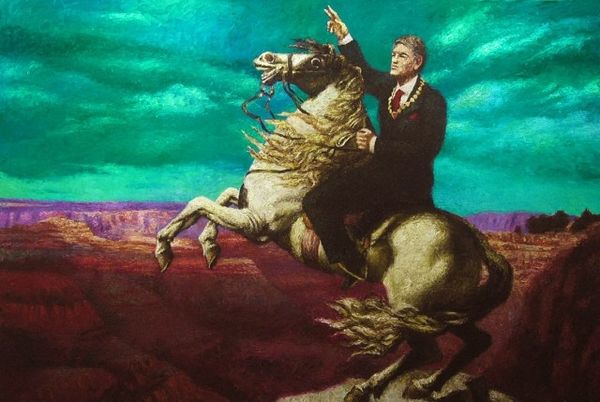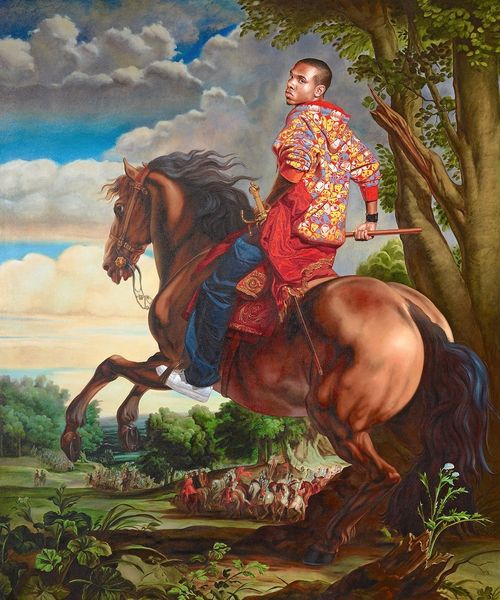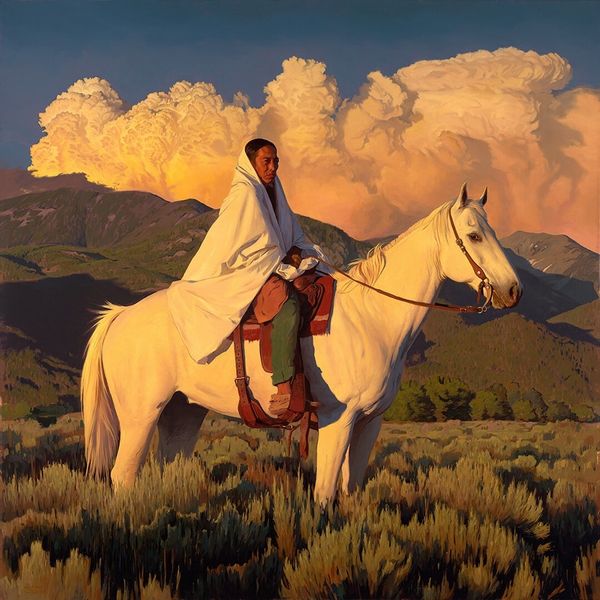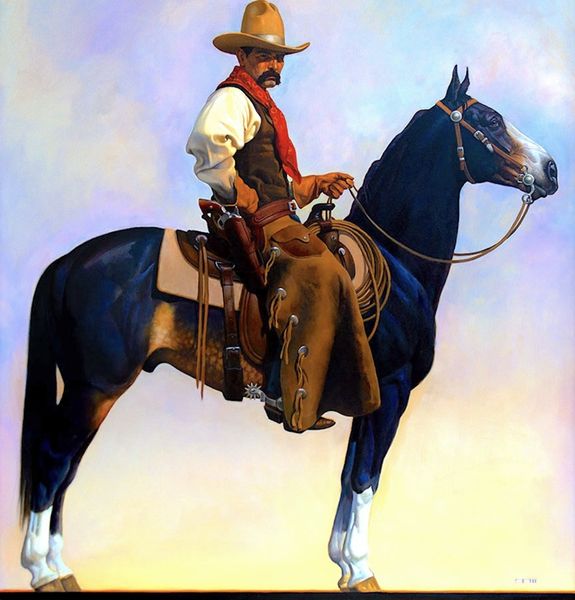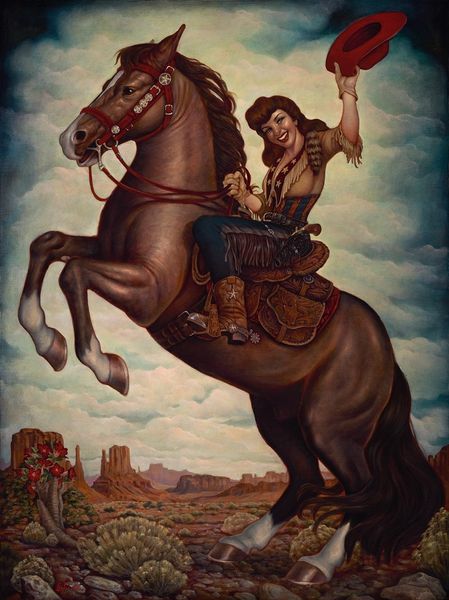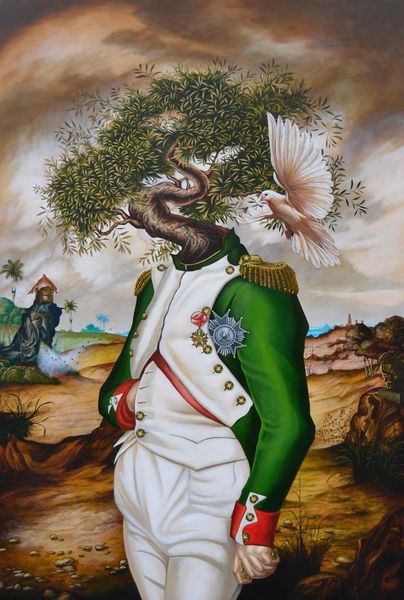
painting, oil-paint
#
portrait
#
pattern-and-decoration
#
figurative
#
contemporary
#
painting
#
oil-paint
#
figuration
#
oil painting
#
orientalism
#
history-painting
Copyright: Modern Artists: Artvee
Editor: Here we have Kehinde Wiley's "Prince Tommaso Francesco of Savoy-Carignano," painted in 2006 using oil paint. The composition immediately grabs your attention - the stark contrast of the figure against the ornamental background. What’s your read on Wiley's construction of this image? Curator: Formally, the piece presents a fascinating dialogue between portraiture and pattern. Note the subject's confident pose atop the rearing horse, mirroring historical equestrian portraits. Now, consider the flat, decorative backdrop. How does that juxtaposition affect our reading of the subject? Editor: It almost flattens him, pushes him forward. I guess it modernizes the classic heroic portrait by removing depth. Curator: Precisely. Wiley employs techniques of scale and placement to focus on a symbolic construction of nobility. Notice the repeated motifs in the background which contrast to the foregrounded, clearly rendered figure and horse. Consider how color functions within this symbolic register. Do the selected hues evoke a particular feeling or historical reference? Editor: There’s definitely a rich color scheme, with a lot of emphasis on bright, almost regal colors such as the greens, golds, reds, and blues in the composition, contributing to the painting’s regal aesthetic. So it’s formal, yet it re-interprets a previous style. Curator: Exactly. The tension lies in that re-interpretation through appropriation. It compels us to confront historical representations of power and their visual vocabulary. Editor: I hadn’t considered it quite that way before; seeing how these elements collide gives it an intriguing layer. Curator: Yes, and close visual study highlights Wiley's commentary on identity, power, and representation within the historical context of portraiture.
Comments
No comments
Be the first to comment and join the conversation on the ultimate creative platform.
